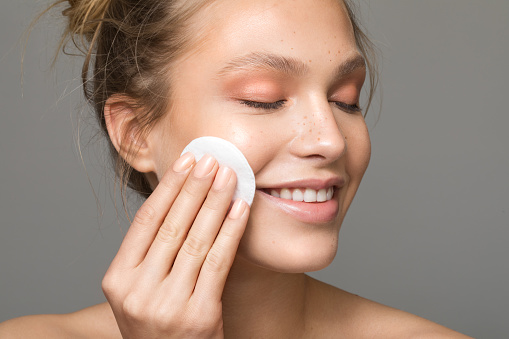The high level of calcium vitamin A, D, B6, B12, biotin, protein in milk makes it essential for people of all ages as it helps in making the bones stronger. However, did you know that milk makes an amazing beauty supplement too? Yes, milk can also address a number of skin concerns that are in this article that you’ll love to know. Read this post till the end for the uses and benefits of milk on the face to treat some skin problems.
Benefits Of Milk On Face
- Loaded with vitamin D that accelerates the production of collagen
- Slows down ageing
- Lighten blemishes and pigmentation.
- Promotes skin’s elasticity
- Contains vitamin A that treat dry, rough and peeling skin
- Contains vitamin B6, that promotes formation of new cells.
- Contains B12 that help lighten over all skin tone and treat unevenness on the skin.
- Acts as a natural moisturizer for the skin.
- Milk contains anti-oxidants that makes the skin look healthier and glowing.
- Treat tanning
- Remove dirt from the face
- Treat sunburn
How To Use Milk On Face

Uses Of Milk On Face:
1. Milk as a cleanser:
Raw milk is the best natural skin cleanser. You can use boiled milk as well. It removes dirt and bacteria from the skin.
How to use milk for cleansing?
- Dip a cotton ball/pad in the milk. Apply it evenly on face and gently rub all over the face.
- You can cleanse your face with milk daily.
2. Milk For Sunburn
Milk contains anti-oxidants that reduce inflammation and soothe sunburn.
How to use milk for sunburn?
- Make a paste with milk and ground oats. Apply on the affected areas for 20 minutes.
- Wash it off.
- You can apply this daily.
- For better result use cold milk to treat sunburn.
3. Milk For Skin Whitening
Milk contains lactic acid that helps to remove dead skin cells and leave the skin bright and white.
How to use milk for skin whitening?
- Make a thick paste with ground coffee, lemon juice and milk.
- Apply on your face and rub for couple of minutes. Leave it for 20 minutes.
- You can use daily.
4. Milk For Tanning
Milk is an amazing anti-tanning agent due to its high lactic acid content.
How to use milk for tanning?
- Make a paste with orange peel/gram flour and milk. Apply on your face for 15 minutes.
- You can apply this daily.
5. Milk for blemishes and pigmentation
Milk contains lactic acid that mildly exfoliates the skin. This helps remove blemishes, pigmentation, and some other skin problems
How to use milk for blemishes and pigmentation?
Make a paste with papaya puree, lemon juice, red lentil powder, and milk for effective results.
Apply on the affected areas for 20 minutes.
You can use daily or alternate days until you see the result.
6. Milk For Natural Moisture
Milk acts as a natural moisturizer that keeps the skin hydrated and nourished. It makes the skin soft, supple, and smooth.
How to use milk as a moisturizer?
- Soak cotton ball/pad in the milk.
- Apply on the face evenly.
- You can add turmeric powder only a pinch in the milk.
- You can leave it overnight for better result if your skin is dry.
7. Milk For Dry, Rough And Peeling Skin
Milk contains vitamin A that treats dryness, roughness and peeling skin. Using milk on the skin is great for nourishing and hydrating skin. It locks the skin’s natural moisture by making it smooth and soft.
How to use milk for dryness?
- Soak cotton ball/pad in the milk and apply on the affected areas evenly.
- Leave it on the face. Or you can add pure clarified butter or white with milk. This will treat roughness on the skin very fast.
FAQs About Milk On Face
Q) Can we use raw milk on the face everyday?
A. Yes, milk is an excellent nourishing ingredient that cleanses and moisturizes the skin gently.
Can we leave raw milk on the face overnight?
A. Yes, leaving milk overnight on the face is a great idea to make your skin well-hydrated, glowing, and healthy.
Q) Can milk remove dark spots?
A. Yes, milk contains lactic acid that helps to lighten dark spots, blemishes, tan, and pigmentation. Milk has mild exfoliating agents that remove dead skin cells and treat overall skin tone.




